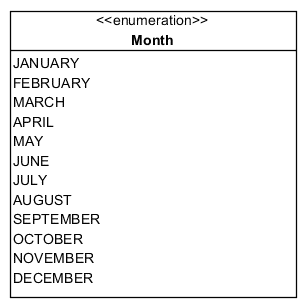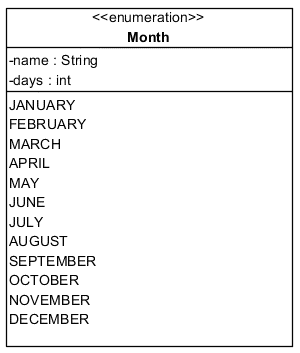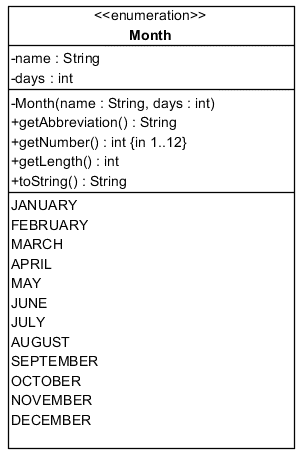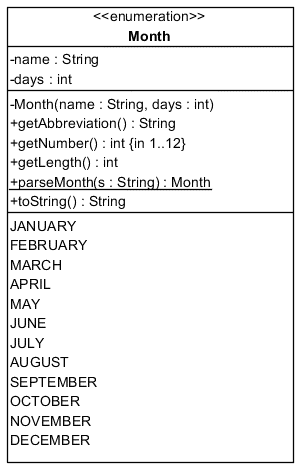Though it is not immediately obvious from the documentation for the
Java API, all enumerated types have the following methods "implemented
for them".
- Static Methods:
-
values() returns an array containing
all of the objects in the set
-
valueOf(String) returns the instance with the
specified identifier (or throws
IllegalArgumentException)
- Non-Static Methods:
-
int compareTo(E other) which uses the order
of the elements
-
boolean equals(E other)
-
ordinal() returns the ordinal value of the instance
(0-based)
-
toString() returns a String
representation of the identifier








